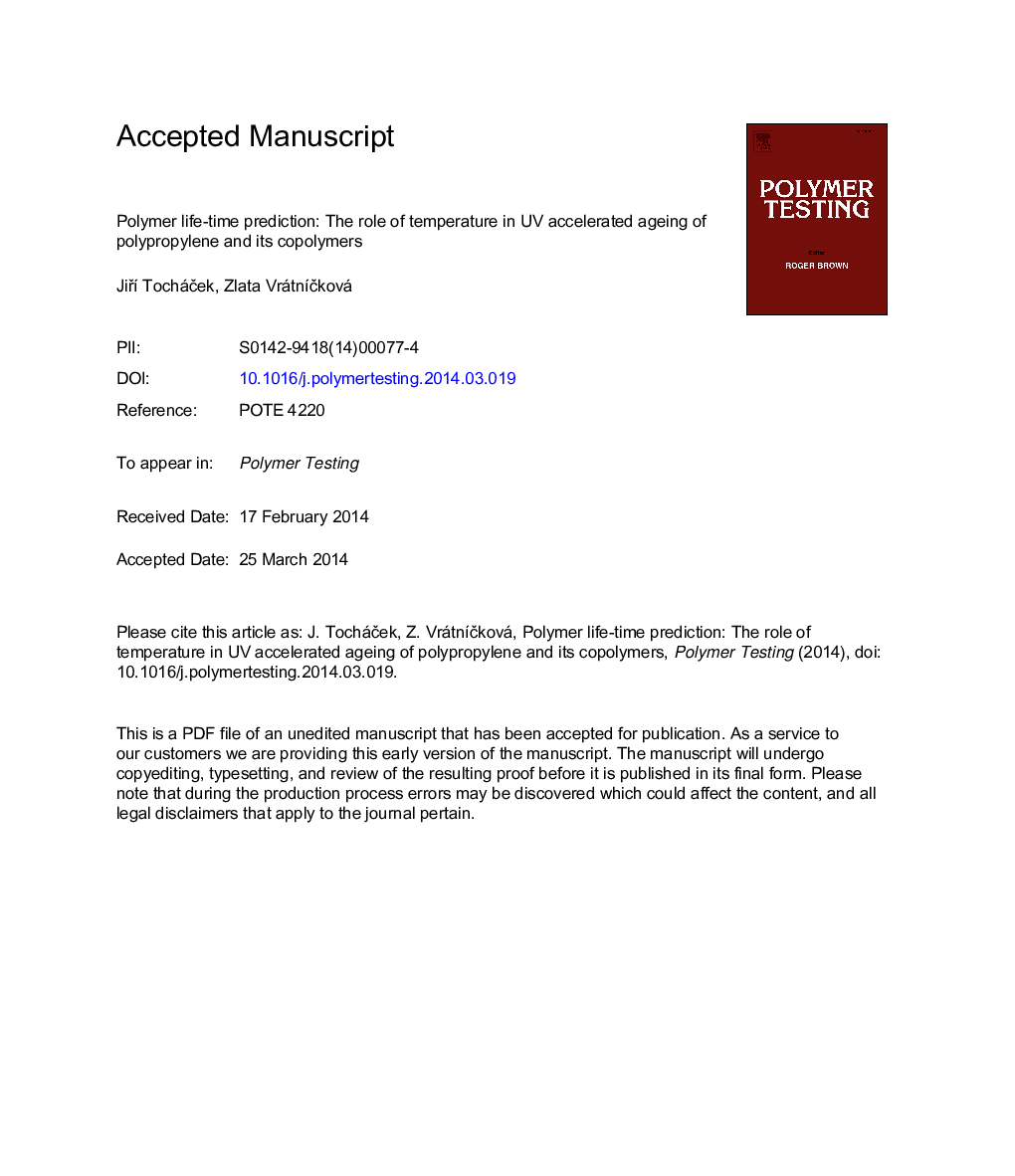| Article ID | Journal | Published Year | Pages | File Type |
|---|---|---|---|---|
| 5206230 | Polymer Testing | 2014 | 24 Pages |
Abstract
Correlation of accelerated ageing data with that of outdoor exposure was carried out based on the comparison of total UV radiation energy (TUVR) needed for degradation of the PP - homopolymer, random copolymer (TOT C2 = 3.2 wt.%) and impact copolymer (TOT C2 = 5.4 wt.%) compression moulded 0.5 mm films. Films were stabilized with 1000 ppm butylated hydroxytoluene (BHT), no UV stabilizer was used. Accelerated ageing was realized in a Q-Sun Xe-1 exposure chamber using a filtered xenon light source and a dry cycle. Weathering was carried out at Brno exposure site, representing the typical mid-European climate. Accelerated ageing was carried out at temperatures of 40, 50, 60 and 70 °C. In accelerated ageing, both the onset of carbonyl index (CI) increase and the point of reaching the same relative increase in CI as due to weathering were used as measures of polymer degradation. For induction periods attained at different temperatures, TUVR energies were calculated accordingly and compared to that of 6 months outdoor exposure. It was found that if TUVR of both types of ageing is to be directly compared, accelerated ageing should be carried out at temperatures of 32-36 °C. Under such conditions, the same amount of TUVR energy induces the same extent of polymer deterioration in both types of ageing and may, therefore, be used for a reliable service life-time prediction.
Keywords
Related Topics
Physical Sciences and Engineering
Chemistry
Organic Chemistry
Authors
JiÅà TocháÄek, Zlata VrátnÃÄková,
